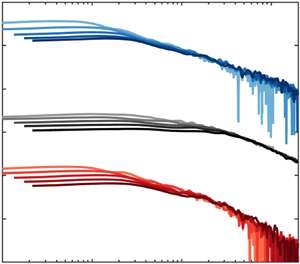Article contents
On the scaling of turbulence in a high Reynolds number tidal flow
Published online by Cambridge University Press: 25 March 2021
Abstract

Data from an energetic tidal flow are used to investigate the appropriateness of the classical scaling of wall turbulence for very high Reynolds numbers and fully rough conditions. The boundary layer occupied the entire channel depth and the Reynolds numbers were several orders of magnitude larger than typically attained in the laboratory. Profiles of the mean velocity, turbulence quantities and spectra exhibit consistencies with the wall-similarity hypothesis and the attached-eddy model, as well as the universality of the near-wall turbulence structure for geophysical flows. The wall-normal velocity spectra and intensities near the free surface are also strongly attenuated at low wavenumbers, consistent with the constraints imposed by any boundary which may be approximated as a plane slip surface. The results can be used to inform the development of turbulence inflow models for assessing the dynamic loading on tidal turbines and the layout of tidal energy farms.
- Type
- JFM Papers
- Information
- Copyright
- © The Author(s), 2021. Published by Cambridge University Press
References
REFERENCES
- 4
- Cited by



